Updated: I have been asked to itemise the individual costs of my setup. All products are listed at the end of the main story.
One of my projects over the Christmas and New Year break was to put together a mini–TV Studio setup in my office. The intention was to have a setup I could use to record Vlogs and Vodcasts, live interviews over Zoom and anything else that was worthy of a video approach to make it more interesting and value-add than simply words or audio.
(Don’t get me wrong; audio is super important and there is a large audio component to the project too).
The central piece of the whole setup was to be my Blackmagic Design ATEM Mini Pro, allowing me to have up to four HDMI based devices I could switch between, as well as a dual audio feed, an HDMI output for monitoring purposes, and up to 20 overlay graphics or still images on tap at the press of a button.
Today, whilst not yet complete, the system had its first shake out in a manner I did not expect but was a decent test of it in operation. In short, I was being interviewed remotely, as against being the interviewer!
The System
As mentioned, the Blackmagic Design ATEM Mini Pro can support 4 HDMI devices, and in my case, for this exercise, port 1 is temporarily running a Fujifilm X-H2S mirrorless camera on a Zhiyun Weebill 3 gimbal, port 2 a GoPro Hero 10 in a Media Mod case giving it HDMI capability, port 3 a GoPro Hero 9, also in a Media Mod case and port 4 is taking a feed from the second monitor of my PC.
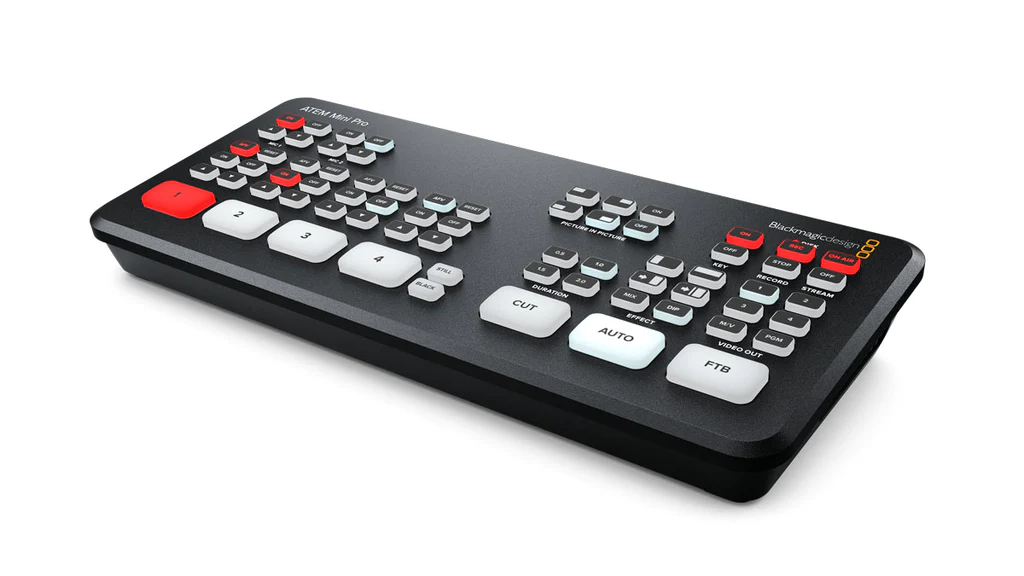
I say the Fujifilm is a temporary thing as it was there today by coincidence due to being tested for another purpose, and I intend to replace this longer term with my Blackmagic Design Pocket Cinema Camera 6K.
The gimbal is a nice touch though I found, as with it being remotely controlled from an inexpensive Orbic TAB8 Android tablet and the Zhiyun ZY Play app, I can use it to pan around the office, tilt up or down, roll, and with the correct lens and body, even zoom and focus all without leaving my desk.
The GoPros are both battery-less, with them being powered by either 12,000mAh power banks or USB chargers depending on the circumstances at the time. The front facing unit, the GoPro Hero 10 is set on a bracket inside an Elgato Ring Light placed above the centre of my two monitors.
 In addition, it also has a Sennheiser MKE400 on the top mount and connected into the Media Mod audio port for local audio recording to the camera as and when needed.
In addition, it also has a Sennheiser MKE400 on the top mount and connected into the Media Mod audio port for local audio recording to the camera as and when needed.
The HDMI port of the Blackmagic Design ATEM Mini Pro is hooked up to an OSEE LCM215E field monitor, and as you’ll see, this is a major part of the overall system. If I need a smaller monitor, I could also use an OSEE G7 7″ Field Monitor 4K I have.
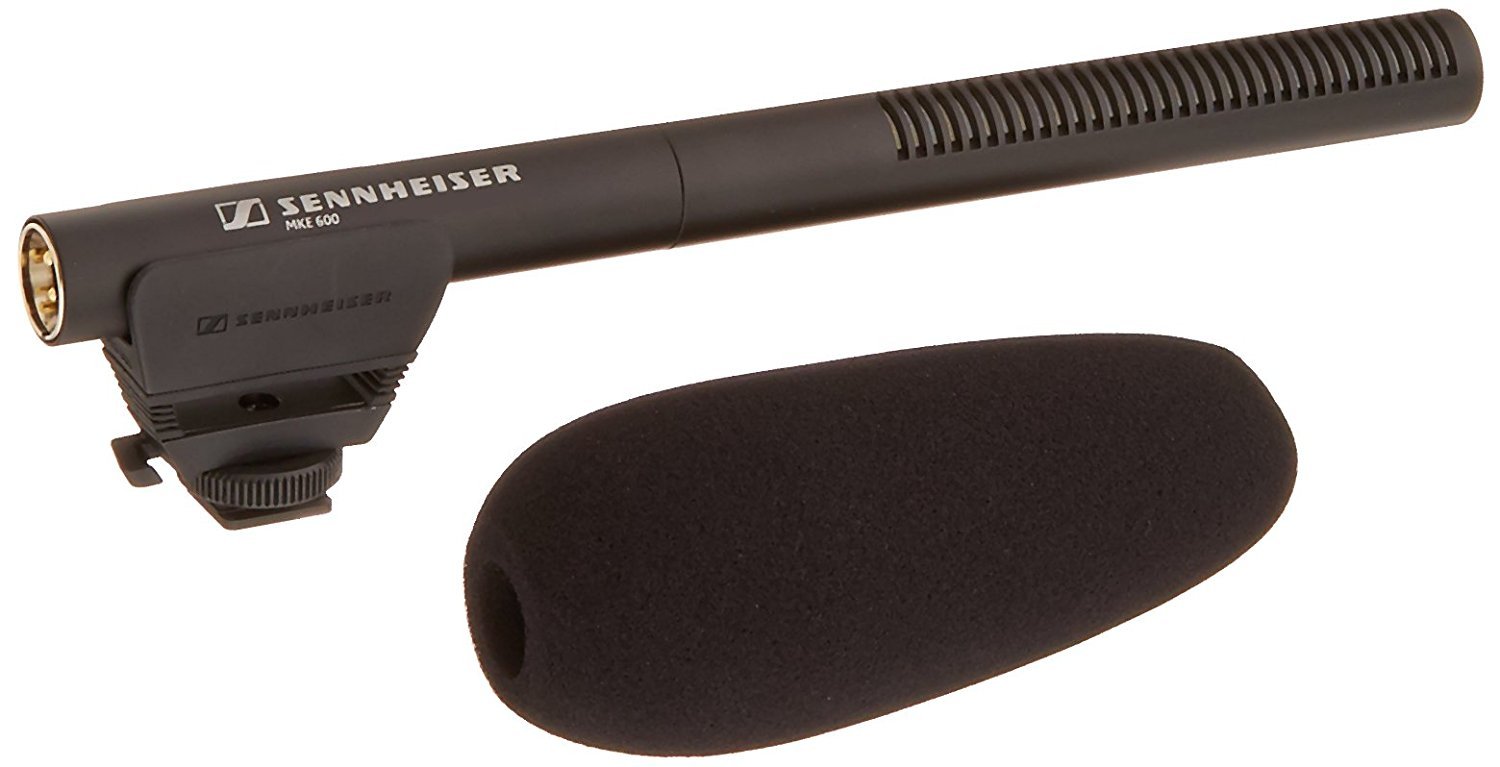 For audio purposes, a Sennheiser MKE600 is connected to audio port 1. This needs an XLR to 3.5 audio adaptor which you can get inexpensively at any decent electronics or music store. Port 2 has my Sennheiser XSW Digital wireless mic base unit plugged in when I use the lapel Lav mic. If that is in use elsewhere, I could equally use my DJI Mic wireless system of course which is a very good inexpensive alternative.
For audio purposes, a Sennheiser MKE600 is connected to audio port 1. This needs an XLR to 3.5 audio adaptor which you can get inexpensively at any decent electronics or music store. Port 2 has my Sennheiser XSW Digital wireless mic base unit plugged in when I use the lapel Lav mic. If that is in use elsewhere, I could equally use my DJI Mic wireless system of course which is a very good inexpensive alternative.
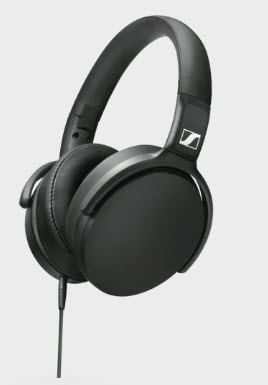 One thing the Blackmagic Design ATEM Mini Pro does not support sadly is a headphone port, so instead, I monitor through the Logitech system my Dell PC is connected to, with the Blackmagic Design ATEM Mini Pro connected to the Dell via a direct serial cable. I can either use my Sennheiser HD 400 Pro headphones or the monitor speakers this way.
One thing the Blackmagic Design ATEM Mini Pro does not support sadly is a headphone port, so instead, I monitor through the Logitech system my Dell PC is connected to, with the Blackmagic Design ATEM Mini Pro connected to the Dell via a direct serial cable. I can either use my Sennheiser HD 400 Pro headphones or the monitor speakers this way.
The final piece of the hardware configuration is a portable SSD, a Samsung 1TB T5. If you are building a system such as this using Blackmagic products, make very sure you check its compatibility list for both Blackmagic Design ATEM Mini Pro model compatible drives as well as those for the company’s cameras.
Software
The major glue that sticks all this together is the freebie Blackmagic Design ATEM Software Control program which is a virtual combination video / audio / graphics mixing desk. With this, you can control what is live and what is in preview and ready to go, load up graphics files such as lower 3rds, title graphics, “bugs” and so on.
From here, you can switch audio channels and video channels in or out, perform transitions and fades between cameras and graphics, create picture-in-picture effects and even, if using Blackmagic cameras, physically control these via the HDMI connectivity.
 Further, if you have the time and inclination to learn how, Blackmagic has built in a macro language to the Blackmagic Design ATEM Mini Pro allowing you to create macros to automate tasks.
Further, if you have the time and inclination to learn how, Blackmagic has built in a macro language to the Blackmagic Design ATEM Mini Pro allowing you to create macros to automate tasks.
I’ll be creating a mini-tutorial on that side of things very soon.
It is worth downloading the manual for the Blackmagic Design ATEM Software; the English language section is very comprehensive and covers over 150 pages! You can get the latest version here.
As well as the operation of the Blackmagic Design ATEM Mini Pro and the software, it goes into a lot of depth behind the scenes and is an invaluable aid to setting up such as system as mine.
Now, the Blackmagic Design ATEM Mini Pro is a staggering piece of gear as it is (and there are sibling versions that have even more smarts and connectivity options). Back when I started in video in the mid ‘90s, to get equipment with this capability would cost in excess of $30K and that doesn’t include cameras or a computer!
But another major party trick with it and the Blackmagic Design ATEM Software is the ability to connect directly to online streaming services such as Facebook Live, Zoom, YouTube and so on, meaning you can easily and inexpensively setup live multi-camera streaming sessions.
And with the SSD connectivity, also simultaneously save these sessions for later upload for others to view at their leisure. Some of the Blackmagic Design ATEM Mini models can even save these sessions directly to the DaVinci Resolve editing system format, meaning they can be brought straight in this software for editing and fine tuning.
I have a basic tutorial on setting up a streaming session here, but a simple example of just what is possible is what happened in my interview today.
Using Zoom, the CEO of Influencing, Phil Sim contacted me. I had the Blackmagic Design ATEM Mini Pro setup with 2 cameras at different angles to me, one front and one side, and additionally, my second monitor was displaying his Zoom image so effectively was a 3rd virtual camera in HIS office.
My mic to converse with Phil was the Sennheiser MKE 600
In Zoom, I had the entire setup as my “web cam”, so unlike a standard webcam such as those from Logitech or Presonus (both of which I use as well by the way when needed), I had access at my disposal to my two cameras, the mic, Phil’s feed from Zoom at will via the Blackmagic Design ATEM software to create whatever sort of feed to Zoom I wanted.
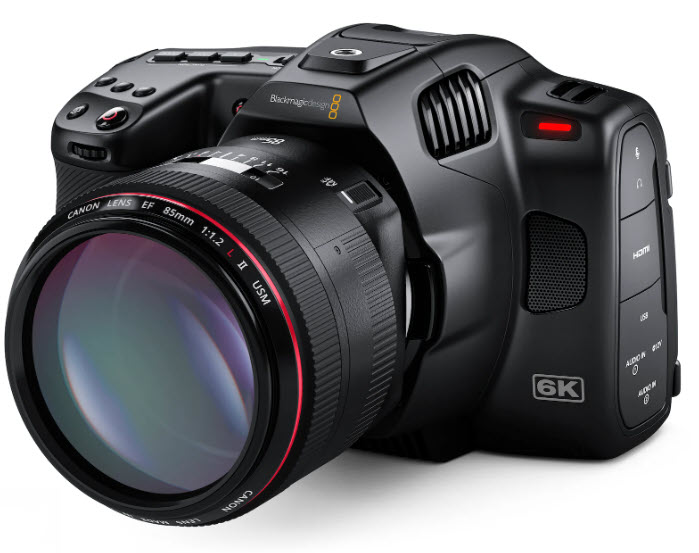 If I had my Blackmagic Design Pocket Cinema Camera 6K in the mix, I could have controlled just about EVERY function of that too.
If I had my Blackmagic Design Pocket Cinema Camera 6K in the mix, I could have controlled just about EVERY function of that too.
That is pretty powerful stuff as they say, and the potential, when you think on it, is mind blowing.
In this circumstance, I did not record the session, although of course I could have done. This was Phil’s interview not mine. But I could still control certain things emanating from my end such as what graphics overlays I wanted and when they were implemented, or what camera angles to use, transition types between camera changes such as fades, dissolves, blinds, pushes etc and even throwing in a music or sound effect overlay if I wanted.
If anyone wants a demonstration of this by the way, feel free to book with me a Zoom session and I’ll setup a demo for you!
Conclusion
I reiterate, at the base level, the Blackmagic Design ATEM Mini Pro allows up to 4 HDMI devices, 2 audio inputs, 1 HDMI monitoring output, direct connection to YouTube, Facebook streaming, Zoom / Teams and so on.
All for around $500 plus cameras, mics etc.
Staggering.
Disclaimer: I AM sponsored by both Blackmagic Design and Sennheiser, but neither has solicited this story.
Pricing:
- Blackmagic Design ATEM Mini Pro $450
- GoPro Hero 9 Black $499
- GoPro Hero 10 Black $699
- GoPro Media Mod x 2 $258
- Sennheiser MKE400 camera mic $319
- Sennheiser MKE 600 Shotgun mic $499
- Sennheiser HD400 Headphones $499
Total $3223.00
Of course, you can save considerable amounts by downgrading the headphones and mics (although I’d countenance against lowering your audio quality), and running a pair of GoPro Hero 9s. This would bring the figure to around $2500, which for the capability is amazing.

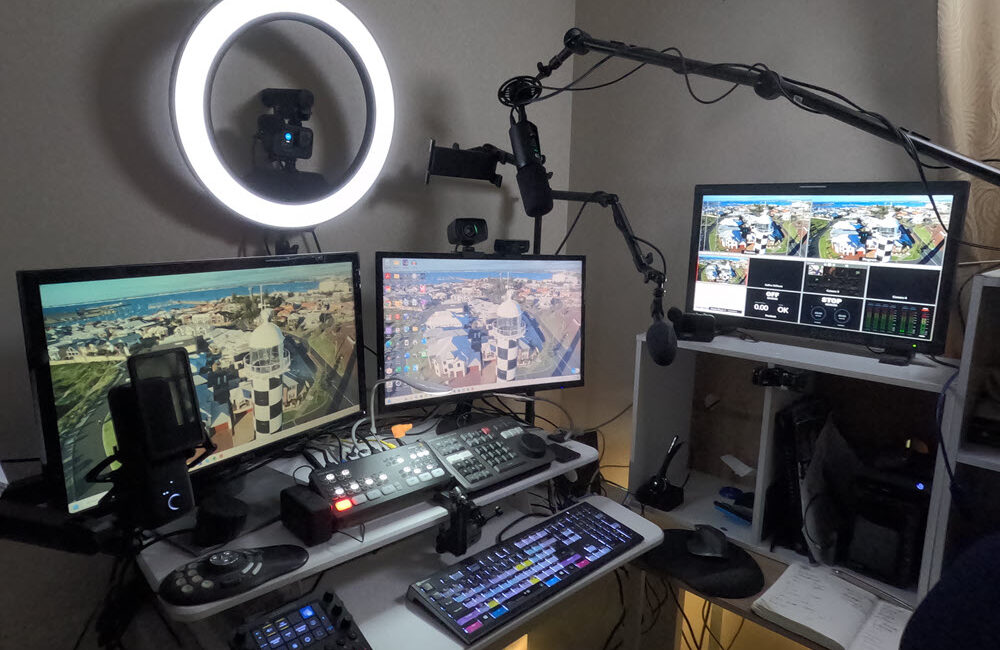

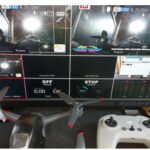
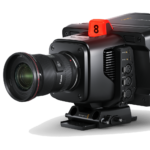

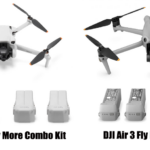

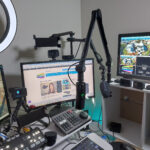

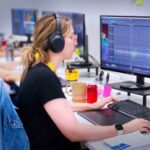





This is a great looking set up with a particularly clever use of GoPro cameras. A few things we’ve found helpful for our set up were a soundbar w/ speaker/microphone combo and a Mac Mini. We found routing external microphones to be a challenge for the less tech savvy among us and something causing delays at the start of meetings for the rest. And for those who do need a computer in the mix (it’s handy when meeting invites need to be resent quickly) a Mac Mini with 16GB of ram is worth every penny. Thanks for a great primer.